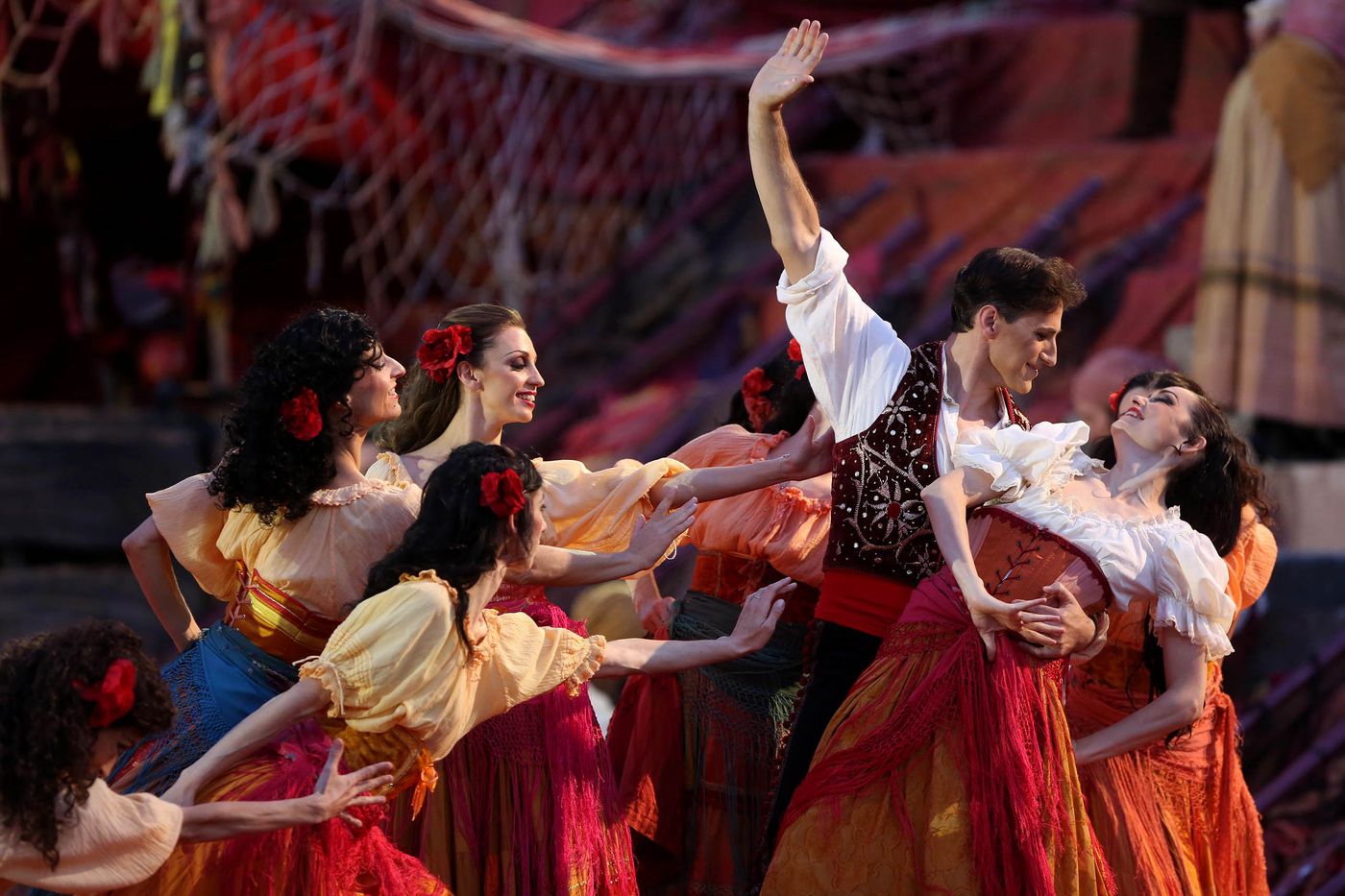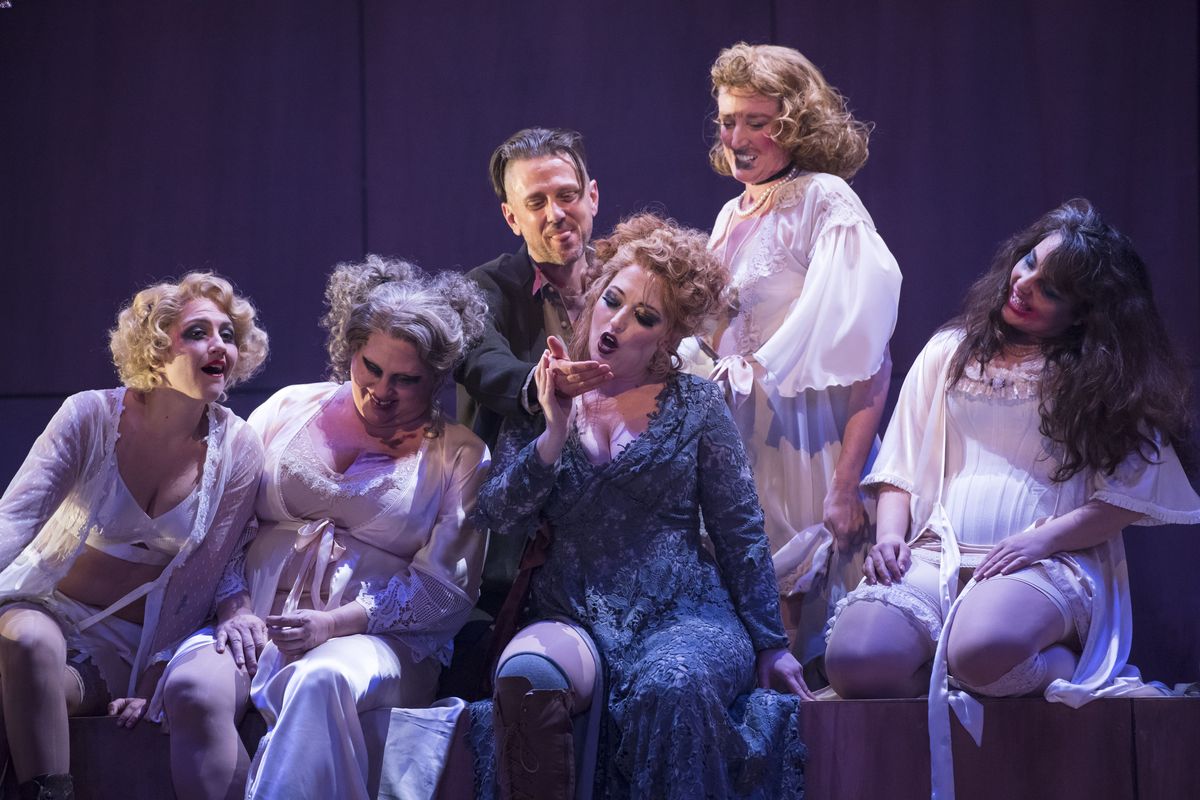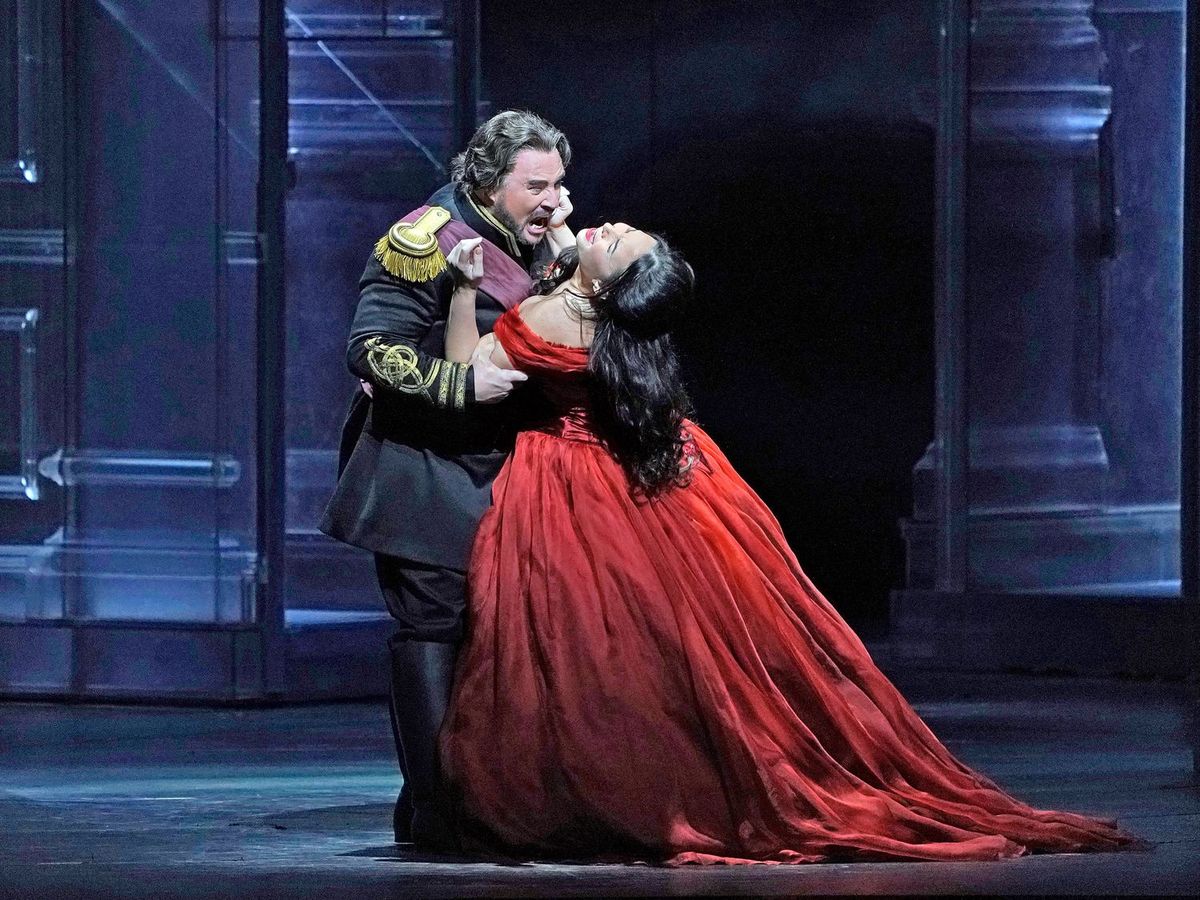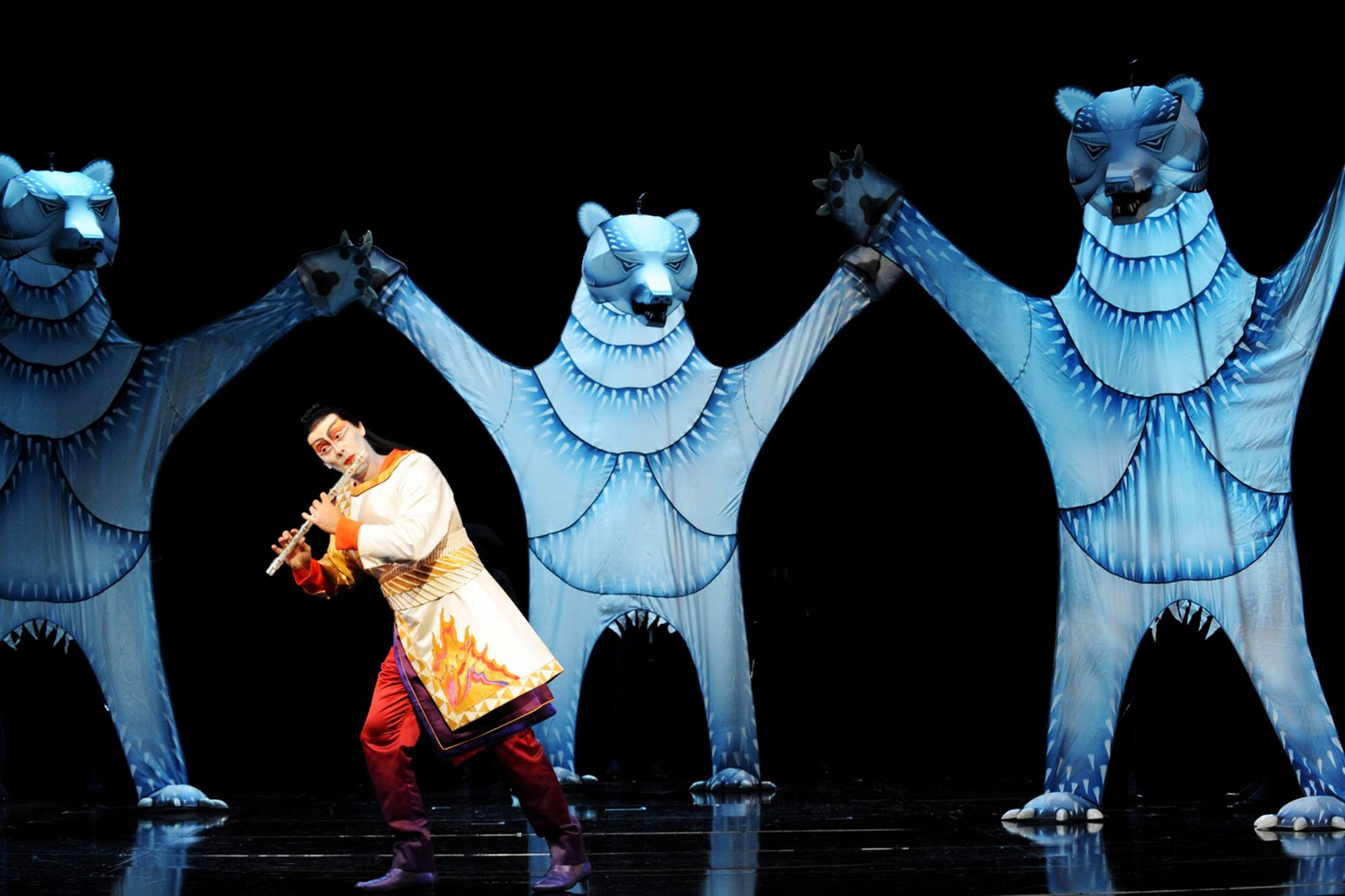Home>Events & Info>Opera>How Long Is Carmen Opera


Opera
How Long Is Carmen Opera
Modified: January 22, 2024
Discover the length of the timeless opera "Carmen" and immerse yourself in the world of passionate arias and dramatic storytelling.
(Many of the links in this article redirect to a specific reviewed product. Your purchase of these products through affiliate links helps to generate commission for AudioLover.com, at no extra cost. Learn more)
Table of Contents
Introduction
Carmen, one of the most beloved and enduring operas, has captivated audiences worldwide since its premiere in 1875. A masterpiece composed by Georges Bizet with a libretto by Henri Meilhac and Ludovic Halévy, Carmen tells a gripping story of love, passion, and tragedy set in 19th century Spain. It is renowned for its beautiful melodies, vibrant characters, and dramatic plot, making it a staple in the opera repertoire.
With its tale of devotion, obsession, and societal norms, Carmen continues to resonate with audiences of all ages and backgrounds. Its timeless themes of love, betrayal, and fate are explored through vivid characters and memorable musical compositions. From the iconic “Habanera” to the passionate duets and ensemble pieces, the music of Carmen is as captivating and powerful today as it was over a century ago.
In this article, we will delve into the rich history, synopsis, music, cultural impact, and reception of Carmen. We will also answer a burning question among opera enthusiasts: how long is Carmen Opera?
So sit back, relax, and embark on a journey to discover the fascinating world of Carmen Opera.
Brief History of Carmen Opera
The origins of Carmen can be traced back to the French novel “Carmen” written by Prosper Mérimée in 1845. The novel gained popularity for its intense storyline and vivid depiction of Spanish culture. Inspired by the success of the novel, Georges Bizet, a French composer, was commissioned to create an opera based on Mérimée’s work.
However, when Carmen premiered at the Opéra-Comique in Paris on March 3, 1875, it faced mixed reactions from the audience and critics. The realistic portrayal of the characters and the unconventional storyline challenged the traditional opera conventions of the time. Despite the initial skepticism, Carmen gradually gained popularity and became one of the most frequently performed operas worldwide.
Tragically, Bizet did not live to witness the immense success of his work. He passed away only three months after Carmen premiered, at the age of 36. Little did he know that his opera would go on to become one of the cornerstones of the opera repertoire.
Over the years, Carmen has undergone various adaptations and interpretations. Directors and conductors have experimented with different settings, costumes, and even different languages to bring their own unique vision to the opera. However, the essence and power of Carmen’s story have remained intact, solidifying its status as a timeless masterpiece.
Today, Carmen is performed in numerous opera houses around the world and continues to captivate audiences with its dramatic storytelling and unforgettable music. Its enduring popularity is a testament to the timeless appeal and universal themes explored in the opera.
Synopsis of Carmen Opera
Carmen tells the gripping story of a passionate and free-spirited gypsy woman named Carmen, who works in a cigarette factory in Seville, Spain. She is desired by many men, but she only has eyes for one: the naïve and infatuated soldier, Don José.
The opera begins with a bustling scene at the factory, where Carmen captivates the attention of everyone with her charm and beauty. Don José, engaged to the innocent Micaëla, falls under the spell of Carmen’s seductive allure. As their romance blossoms, Don José becomes increasingly obsessed with Carmen, neglecting his duties as a soldier and deserting the army.
As their relationship grows, Carmen begins to lose interest in Don José, and her attention turns to the glamorous toreador, Escamillo. Jealous and consumed by his love for her, Don José confronts Carmen and pleads with her to return to him. In a moment of desperation, he stabs her, resulting in her untimely death.
The tragic tale of Carmen explores themes of love, desire, and fate. It delves into the conflict between freedom and societal expectations, as Carmen defies the conventional norms of her time. She represents the embodiment of passion and independence, while Don José represents a man torn between duty and desire.
The opera is also characterized by its vibrant and diverse ensemble cast, which includes other factory workers, smugglers, and soldiers. Throughout the story, these characters provide comic relief, add depth to the narrative, and showcase the melting pot of cultures and personalities in Seville.
Carmen’s story is brought to life through Bizet’s masterful score, with its unforgettable arias, duets, and ensemble pieces. Highlights include the sultry and iconic “Habanera,” where Carmen declares her love for freedom, and the energetic and rousing “Toreador Song,” which celebrates Escamillo’s bravery and charisma.
While Carmen’s tale ends in tragedy, her spirit lives on through the enduring popularity of the opera. It continues to captivate audiences with its passionate story, memorable characters, and powerful music.
The Music of Carmen Opera
The music of Carmen is a true testament to Georges Bizet’s genius as a composer. It is characterized by its melodic richness, rhythmic energy, and emotional depth. From the iconic arias to the dramatic ensemble pieces, the music enhances the storytelling and brings the characters to life.
One of the most famous and recognizable songs from Carmen is the “Habanera.” This seductive and alluring aria is sung by Carmen herself, as she proclaims her desire for freedom and love. The melody is instantly captivating, and the lyrics showcase Carmen’s fierce and independent spirit.
Another standout moment in the opera is the “Toreador Song.” This vibrant and triumphant aria is performed by Escamillo, the charismatic bullfighter who captures Carmen’s heart. The rousing melody and powerful chorus create a captivating atmosphere, celebrating Escamillo’s bravery and allure.
In addition to these iconic arias, Carmen is filled with numerous duets and ensemble pieces that highlight the intense emotions and conflicts among the characters. The love duets between Carmen and Don José convey both the fiery passion and the doomed nature of their relationship.
Bizet’s music borrows from Spanish and gypsy influences, infusing the opera with a distinct and exotic atmosphere. The use of castanets, tambourines, and other percussive instruments adds to the vibrant and rhythmic nature of the score. The orchestration is lush and dynamic, creating a vivid sonic backdrop for the unfolding drama.
What makes the music of Carmen so compelling is its ability to seamlessly transition between moments of tenderness, passion, and tragedy. Bizet masterfully captures the emotional complexity of the characters through his evocative melodies and harmonies.
Despite the initial mixed reactions to Carmen, the power and beauty of its music have stood the test of time. It continues to be performed in opera houses worldwide, enchanting audiences with its unforgettable melodies and compelling storytelling.
Cultural Impact of Carmen Opera
Carmen’s cultural impact cannot be overstated. Since its premiere, it has become one of the most influential operas in history, leaving a lasting imprint on various aspects of popular culture.
One of the notable ways in which Carmen has made an impact is through its depiction of strong, independent female characters. Carmen herself is a trailblazer, defying societal norms and expectations. Her character has inspired countless women throughout the years, becoming a symbol of empowerment and liberation.
The opera’s setting in Spain has also had a profound cultural impact. Carmen introduced audiences to the vibrant and colorful world of Spanish culture, from the flamenco-inspired music and dancing to the depiction of bullfighting. It fueled a widespread fascination with all things Spanish, influencing fashion, art, and even travel trends.
Carmen’s music has been prominently featured in films, television shows, and commercials, further solidifying its place in popular culture. Its melodies have been sampled and reimagined in various genres, transcending the boundaries of the operatic world. This widespread recognition of the music has introduced new audiences to the world of opera and expanded its reach.
The character of Carmen has been portrayed on screen by numerous actresses, bringing her complex and seductive persona to a wider audience. These cinematic adaptations have helped to popularize the story and enhance its cultural relevance.
Furthermore, Carmen has become a benchmark for opera singers, particularly sopranos and mezzo-sopranos. The role of Carmen requires a powerful and expressive voice, as well as strong acting abilities. Many renowned singers have left an indelible mark on the character, contributing to the opera’s enduring popularity.
Lastly, Carmen has played a significant role in shaping the perception of opera as an art form. It showcases the emotional depth and dramatic power of the genre, dispelling any notions of opera being outdated or inaccessible. Its accessibility and relatability have drawn in audiences who may have previously been hesitant to engage with opera.
Overall, the cultural impact of Carmen cannot be denied. Its influence on music, fashion, film, and perceptions of opera has cemented its status as an iconic and enduring work of art.
Reception and Reviews of Carmen Opera
When Carmen first premiered in 1875, it received mixed reviews from both critics and audiences. Many were taken aback by the opera’s realistic portrayal of characters and its departure from traditional opera conventions. The unconventional storyline and the depiction of a strong-willed, independent female protagonist challenged the norms of the time.
Some critics praised the opera’s music and its ability to capture the spirit of Spain, while others found fault with the perceived immorality of the story and its characters. Despite these initial reservations, Carmen gradually gained recognition and popularity.
Over the years, Carmen has received countless reviews and critical assessments. It is now considered one of the greatest operas ever composed. Critics have lauded its melodic richness, dramatic intensity, and the depth of its characterizations.
The New York Times, in a review of a performance at the Metropolitan Opera, described Carmen as “the masterpiece of the French lyric stage”, praising the vibrant and captivating music and the emotional depth of the characters. The review further applauded the opera’s lasting impact on popular culture.
Not only has Carmen been celebrated for its music, but also for its storytelling. The Guardian hailed it as “a seething cauldron of lust, jealousy, and violence,” while The Telegraph praised Bizet’s ability to create “a vivid musical tapestry that vividly depicts the passions of the human heart.”
Carmen’s enduring popularity and critical acclaim have solidified its place in the opera repertoire. It continues to be performed by leading opera companies around the world and is beloved by audiences of all backgrounds.
While reviews have varied over the years, the consensus remains that Carmen is an exceptional work of art. Its captivating music, compelling characters, and timeless themes have ensured its place as a cornerstone of opera and a testament to Bizet’s brilliance as a composer.
Length of Carmen Opera
The length of Carmen Opera can vary depending on factors such as the production, the conductor’s interpretation, and the inclusion of any additional cuts or extended musical sections. On average, a typical performance of Carmen lasts approximately two and a half to three hours, including intermissions.
The opera is divided into four acts, with each act containing multiple scenes. Act 1 introduces us to the world of Carmen and her fellow factory workers. Act 2 takes us to the smugglers’ hideout and showcases Carmen’s relationship with both Don José and Escamillo. Act 3 brings us to a tavern and explores the mounting tensions and conflicts between the characters. Finally, Act 4 is the climactic finale, culminating in the tragic demise of Carmen.
The duration of each act can vary, with Act 1 typically being the shortest and Act 4 usually being the longest. Act 1 lasts around 30-40 minutes, Act 2 can range from 30-45 minutes, Act 3 generally lasts around 20-30 minutes, and Act 4 is usually around 25-35 minutes. However, these times can vary depending on the specific production and the pacing of the performance.
It’s worth noting that some productions may choose to make cuts or alterations to the original score, shortening the overall length of the opera. These cuts are typically made to streamline the story or to accommodate time constraints of certain venues or performances. However, significant cuts may result in a loss of some of the intricacies and nuances of the opera.
It is always advisable to check the specific performance details and running time provided by the respective opera company or production before attending a performance of Carmen. This will give you a more accurate estimate of how long the particular rendition of Carmen you plan to see will last.
While the length may vary, the impact of Carmen remains consistent. Whether it’s a two-and-a-half-hour performance or a slightly shorter version, the dramatic storytelling, memorable characters, and captivating music of Carmen continue to captivate audiences and solidify its status as one of the most beloved and enduring operas of all time.
Conclusion
Carmen Opera, with its mesmerizing music, captivating storyline, and enduring cultural impact, has secured its place as a beloved masterpiece in the world of opera. From its premiere in 1875 to the present day, Carmen has continued to captivate audiences with its timeless themes of love, passion, and tragedy.
Through the rich melodies and powerful orchestration of Georges Bizet, Carmen’s music has become synonymous with operatic excellence. Its iconic arias, such as the “Habanera” and the “Toreador Song,” have cemented their place in the public consciousness, transcending the boundaries of the opera house and permeating popular culture.
The story of Carmen, with its portrayal of a strong, independent woman fighting for her freedom, has made a profound impact on the portrayal of female characters in opera. Carmen’s defiance of societal norms and her unwavering pursuit of love and self-determination continue to inspire audiences worldwide.
Carmen’s cultural impact extends beyond the stage, influencing fashion, film, and other art forms. Its vibrant and evocative depiction of Spanish culture has kindled a fascination with Spain, from its music and dance to its traditions and landscapes.
Despite the initial mixed reviews, Carmen has garnered critical acclaim and a dedicated following. Its powerful storytelling and complex characters have resonated with audiences over the years, ensuring its place as a cornerstone of the opera repertoire.
Whether it lasts for two and a half hours or closer to three, a performance of Carmen is an immersive and emotional experience. It transports us to 19th century Spain, immersing us in a world of passion, jealousy, and fate.
In conclusion, Carmen Opera’s enduring popularity, profound cultural impact, and melodic brilliance have solidified its position as one of the most cherished and influential operas of all time. Its power to engage and captivate audiences remains undiminished, making it a true gem of the operatic world.











